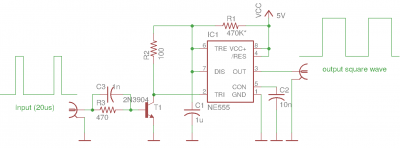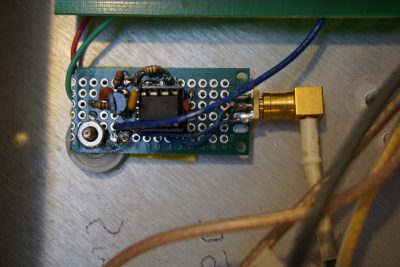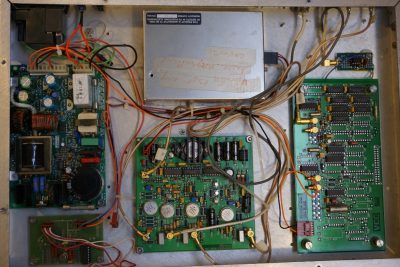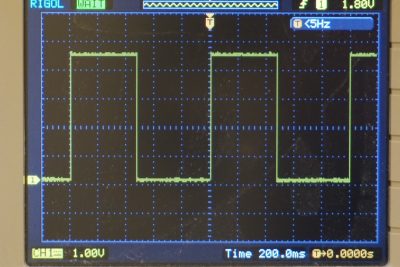Last time, I did a teardown of the Datum 8040 Rudidium standard. As I discussed, the 8040 has a 1PPS output but the pulse width is very short, at around 20µs. In this blog post, let us take a look at how to extend this 20µs pulse to make the 1PPS output symmetrical. As usual, a video is included towards the end.
One of the easiest ways to extend the pulse width is to use a monostable circuit. And this can be done using the versatile 555 timer. The schematic below shows the circuit. The output pulse width is determined by t=1.1*R1*C1. For the component values given, the output pulse width is roughly 500ms. The NPN transistor is used to invert the input signal so that the timer is triggered on the rising edge of the input signal. C3 is used to improve the turn-on time of the transistor as when the pulse is first applied, a short duration high current flows through the base and drives the transistor into saturation.
Alternatively, you could also use a 74HC123 monostable multivibrator IC or even use discrete transistors to build your own monostable circuit.
The finished circuit fits nicely on a small protoboard. The +5V is taken directly from the 1PPS TTL board in the 8040, and the 1PPS input is soldered directly onto both the TTL board and the 555 protoboard via a short blue wire. Ideally I should have used coax cable instead, but given the short length of the wiring the signal degradation is minimum.
There is plenty of space inside this Rubidium frequency standard, so the 555 board can be mounted easily using one of the existing mounting screws. I used a short SMB-to-BNC cable to route the extended 1PPS signal out to the back panel.
And here is a picture showing the waveform coming out from the 555 timer. It is almost a perfect square wave.
Finally, here is a video discussing this modification. I also added an on/off switch so that I could turn off the Rubidium standard when it is not in use.





